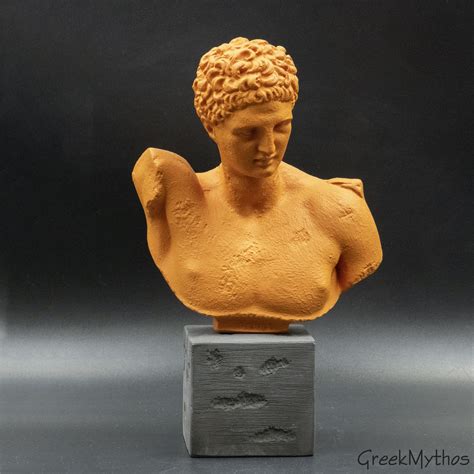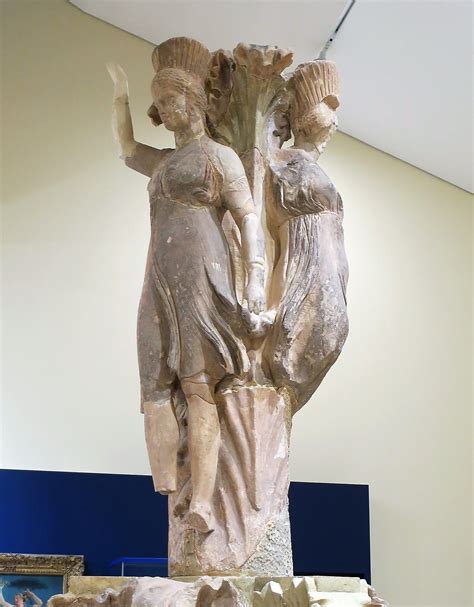hermes and the infant dionysus analysis | dancers of delphi hermes and the infant dionysus analysis The group is sculpted from a block of the best quality of Parian marble. Hermes measures 2.10/2.12 m, 3.70 m with the base. The right foot of Hermes is integral with a section of the base, which has undergone some adjustment in antiquity.The face and torso . See more Gada gliemji. Latvijas gliemeņu sugu saraksts. Latvijas gliemežu sugu saraksts. Latvijas gliemeņu bildes. Latvijas gliemežu bildes. LDF: .
[email protected] Sunday, 16-Jan-2022 15:11:32 EET LDF: Latvijas daba:
0 · the god Hermes by praxiteles
1 · statue of Hermes
2 · dancers of delphi
3 · Hermes of olympia
4 · Hermes by praxiteles
5 · Hermes and the infant dionysos pdf
6 · Hermes and dionysus sculpture
7 · Hermes and dionysus praxiteles
Louis Vuitton x Air Force 1 Low 'Triple Black'. 2022. $4,968. Louis Vuitton x Air Force 1 Low 'Multi-Color Patchwork'. 2022. $10,007. Shop the curated Louis Vuitton x Nike Air Force 1 collection on GOAT. Featuring shoes. Buyer .

the god Hermes by praxiteles
Hermes and the Infant Dionysus, also known as the Hermes of Praxiteles or the Hermes of Olympia is an ancient Greek sculpture of Hermes and the infant Dionysus discovered in 1877 in the ruins of the Temple of Hera, Olympia, in Greece. It is displayed at the Archaeological Museum of Olympia. It is . See moreThe Olympia site was hit by an earthquake during the reign of the Roman emperor Diocletian in the final years of the third century C.E, collapsing the roof of the Temple of Hera and burying the statue in rubble. See moreIn 1874, the Greek state signed an agreement with Germany for an archaeological exploration of the Olympia site, which was first dug in the French Morea expedition of 1829. The German excavations in . See moreThe group is sculpted from a block of the best quality of Parian marble. Hermes measures 2.10/2.12 m, 3.70 m with the base. The right foot of Hermes is integral with a section of the base, which has undergone some adjustment in antiquity.The face and torso . See more
• The statue is present in the 2016 anime Sekko Boys. See more• Greece portal• Ancient Greece portal• Visual arts portal• Atalante Hermes See more• Aileen Ajootian, "Praxiteles", Personal Styles in Greek Sculpture (Olga Palagia & Jerome J. Pollitt, eds.), Cambridge University Press, 1998 (1st edition 1996) ISBN 0-521-65738-5, pp. 103-110.• Rhys Carpenter, "Two Postscripts to the Hermes . See more
• Dossier : Praxitèle, un maître de la sculpture antique, Musée du Louvre (in French) See more The statue of Hermes and the Infant Dionysus, supposedly created by Praxiteles, was discovered on May 8, 1877, but its influential presence makes it a timeless piece of Hellenism, and later, Western culture. It is seen as the .According to myth, Hermes and Dionysos were sons of Zeus, but by different mothers (the princess Semele and the minor goddess Maia, respectively). To protect the infant Dionysos, .Hermes and the Infant Dionysus is a celebrated ancient Greek sculpture attributed to the renowned sculptor Praxiteles. The statue depicts the god Hermes holding the infant Dionysus .
In Western sculpture: Late Classical period (c. 400–323 bce) The Hermes Carrying the Infant Dionysus at Olympia, which may be an original from his hand, gives an idea of how effectively . This masterpiece of the classical era stands as an epitome of grace, showcasing the divine messenger and son of Zeus, Hermes, holding the infant Dionysus, the god of wine. .Hermes with the Infant Dionysus. Classical Greek. replica: from the Louvre, Paris. date of the original: mid-4th century BC. provenance of the original: discovered in AD 1877 in the cella of .
The portrayal of Hermes holding the infant Dionysus highlights the importance of familial bonds among gods in Greek mythology. This connection illustrates Hermes' role as a guide and .Thomas Davidson, Praxiteles' Hermes with the Infant Dionysos, The American Art Review, Vol. 1, No. 1 (Nov., 1879), pp. 24-28
Hermes and the Infant Dionysus, also known as the Hermes of Praxiteles or the Hermes of Olympia is an ancient Greek sculpture of Hermes and the infant Dionysus discovered in 1877 .
Hermes and the Infant Dionysus, also known as the Hermes of Praxiteles or the Hermes of Olympia is an ancient Greek sculpture of Hermes and the infant Dionysus discovered in 1877 in the ruins of the Temple of Hera, Olympia, in Greece. It is .

The statue of Hermes and the Infant Dionysus, supposedly created by Praxiteles, was discovered on May 8, 1877, but its influential presence makes it a timeless piece of Hellenism, and later, Western culture. It is seen as the epitome of .
According to myth, Hermes and Dionysos were sons of Zeus, but by different mothers (the princess Semele and the minor goddess Maia, respectively). To protect the infant Dionysos, Zeus entrusted him to Hermes, who together with a band of nymphs, hid the child near Mt. Nysa in Anatolia (modern Turkey).Hermes and the Infant Dionysus is a celebrated ancient Greek sculpture attributed to the renowned sculptor Praxiteles. The statue depicts the god Hermes holding the infant Dionysus and is considered one of the masterpieces of classical Greek art.In Western sculpture: Late Classical period (c. 400–323 bce) The Hermes Carrying the Infant Dionysus at Olympia, which may be an original from his hand, gives an idea of how effectively a master could make flesh of marble. This masterpiece of the classical era stands as an epitome of grace, showcasing the divine messenger and son of Zeus, Hermes, holding the infant Dionysus, the god of wine. Hermes is portrayed as a young, athletic figure with harmonious proportions, embodying the idealized male form of the period.
Hermes with the Infant Dionysus. Classical Greek. replica: from the Louvre, Paris. date of the original: mid-4th century BC. provenance of the original: discovered in AD 1877 in the cella of Heraeum, Olympia; now in the Olympia Museum, Greece. description: Male figure with legs missing from just below the knees. Right arm missing above elbow.
statue of Hermes
The portrayal of Hermes holding the infant Dionysus highlights the importance of familial bonds among gods in Greek mythology. This connection illustrates Hermes' role as a guide and protector, emphasizing themes of nurture and care.Thomas Davidson, Praxiteles' Hermes with the Infant Dionysos, The American Art Review, Vol. 1, No. 1 (Nov., 1879), pp. 24-28
Hermes and the Infant Dionysus, also known as the Hermes of Praxiteles or the Hermes of Olympia is an ancient Greek sculpture of Hermes and the infant Dionysus discovered in 1877 in the ruins of the Temple of Hera, Olympia, in Greece. It is .Hermes and the Infant Dionysus, also known as the Hermes of Praxiteles or the Hermes of Olympia is an ancient Greek sculpture of Hermes and the infant Dionysus discovered in 1877 in the ruins of the Temple of Hera, Olympia, in Greece. It is . The statue of Hermes and the Infant Dionysus, supposedly created by Praxiteles, was discovered on May 8, 1877, but its influential presence makes it a timeless piece of Hellenism, and later, Western culture. It is seen as the epitome of .According to myth, Hermes and Dionysos were sons of Zeus, but by different mothers (the princess Semele and the minor goddess Maia, respectively). To protect the infant Dionysos, Zeus entrusted him to Hermes, who together with a band of nymphs, hid the child near Mt. Nysa in Anatolia (modern Turkey).
Hermes and the Infant Dionysus is a celebrated ancient Greek sculpture attributed to the renowned sculptor Praxiteles. The statue depicts the god Hermes holding the infant Dionysus and is considered one of the masterpieces of classical Greek art.In Western sculpture: Late Classical period (c. 400–323 bce) The Hermes Carrying the Infant Dionysus at Olympia, which may be an original from his hand, gives an idea of how effectively a master could make flesh of marble. This masterpiece of the classical era stands as an epitome of grace, showcasing the divine messenger and son of Zeus, Hermes, holding the infant Dionysus, the god of wine. Hermes is portrayed as a young, athletic figure with harmonious proportions, embodying the idealized male form of the period.
Hermes with the Infant Dionysus. Classical Greek. replica: from the Louvre, Paris. date of the original: mid-4th century BC. provenance of the original: discovered in AD 1877 in the cella of Heraeum, Olympia; now in the Olympia Museum, Greece. description: Male figure with legs missing from just below the knees. Right arm missing above elbow.The portrayal of Hermes holding the infant Dionysus highlights the importance of familial bonds among gods in Greek mythology. This connection illustrates Hermes' role as a guide and protector, emphasizing themes of nurture and care.Thomas Davidson, Praxiteles' Hermes with the Infant Dionysos, The American Art Review, Vol. 1, No. 1 (Nov., 1879), pp. 24-28

prada 17ws real vs fake
Giày Louis vuitton chính hãng Pháp, giày dép da cho nam đủ màu, đủ size hàng hiệu. Giày LV cao cấp nhập khẩu nhiều kiểu dáng Sandal, giày da nam, giày lười Auth hàng hiệu. Mua ngay giá tốt nhất.
hermes and the infant dionysus analysis|dancers of delphi


























